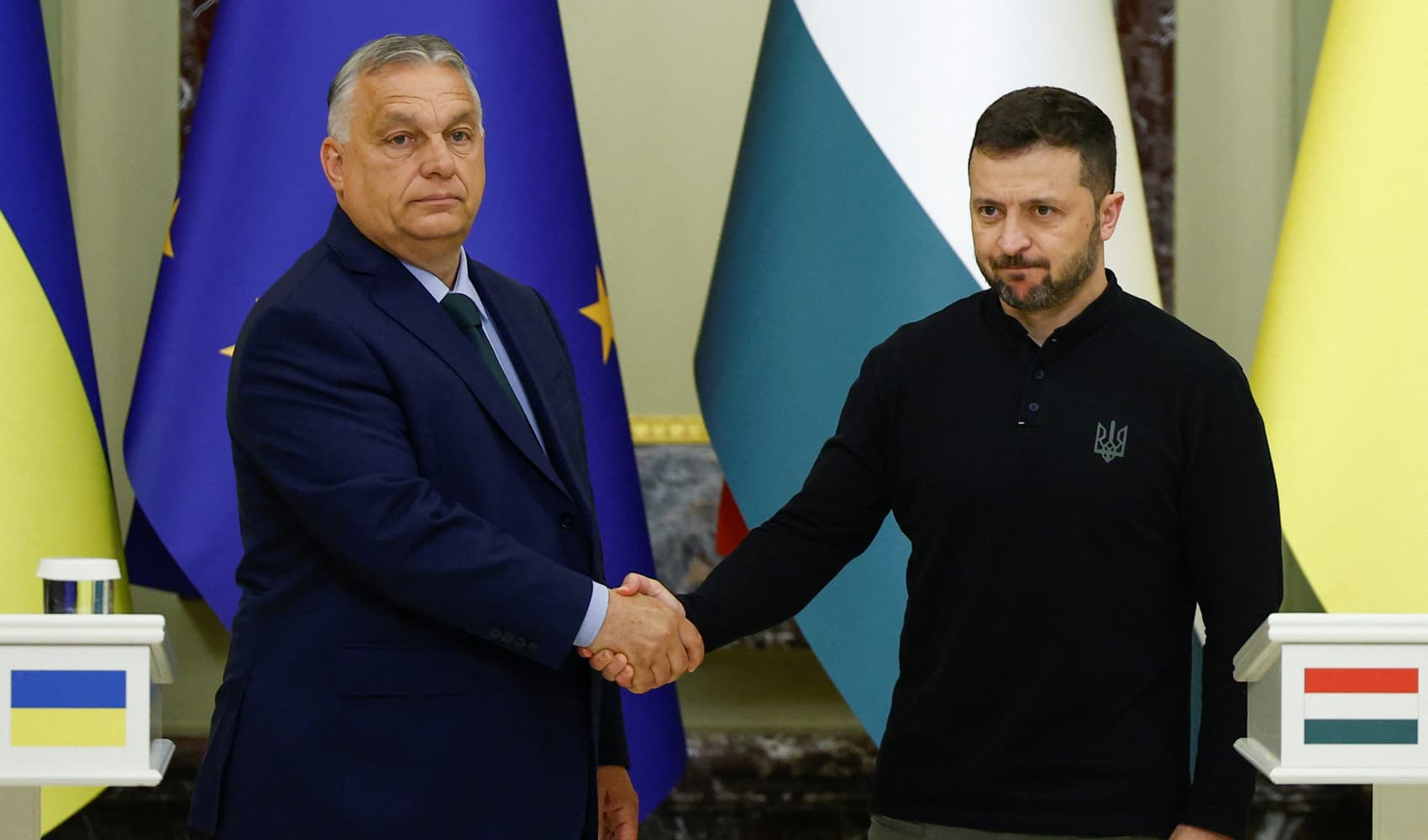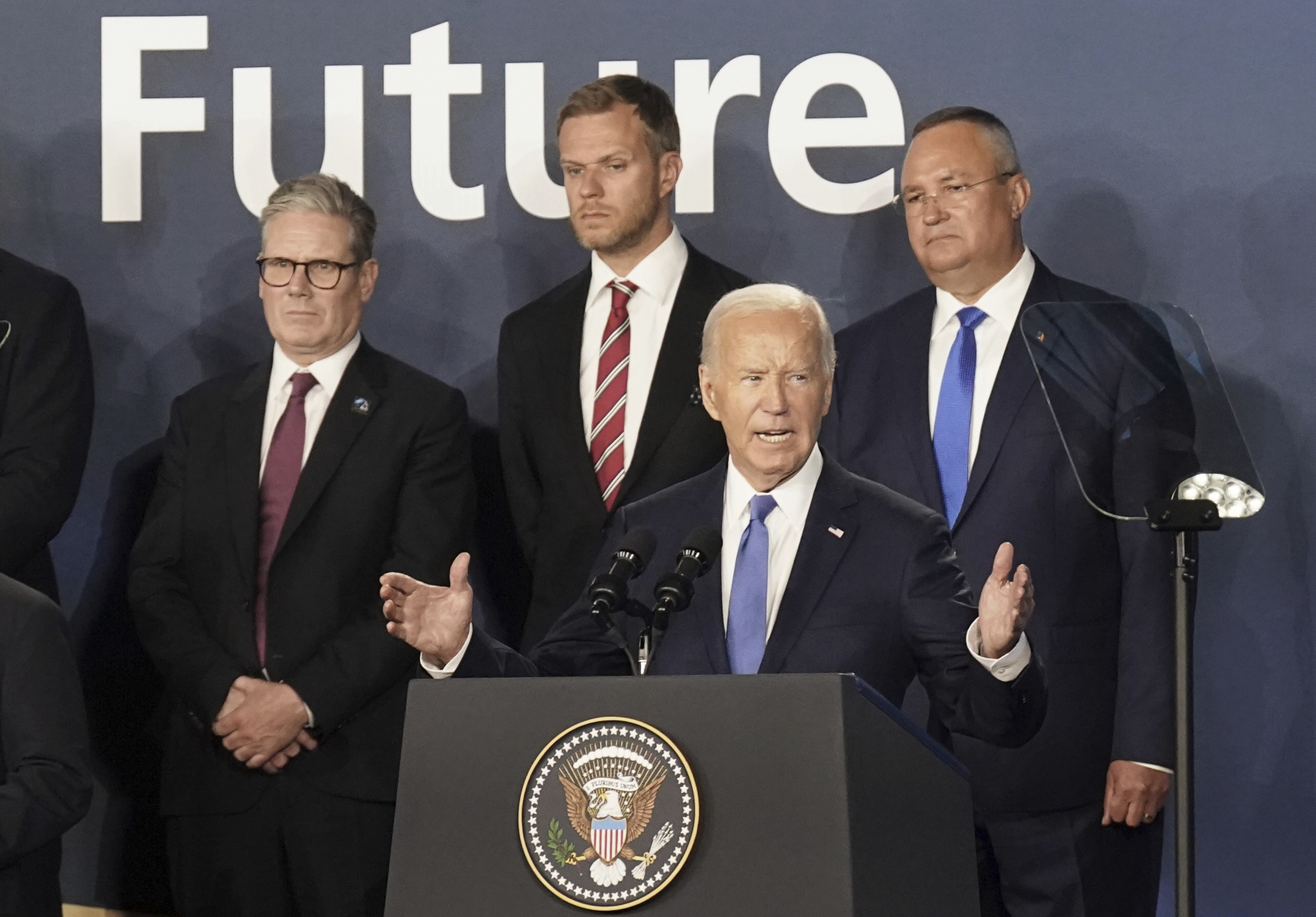
The American-made F-16 is an iconic fighter jet that's been the front-line combat plane of choice for the NATO alliance and numerous air forces around the world for 50 years.
Western countries have pledged F-16s to Kyiv, and some have arrived in Ukraine, officials in Washington confirmed to The Associated Press. The fighter jets are expected to start flying sorties in Ukrainian skies soon and will be a much-needed boost to the country’s current fleet of Soviet-era jets to counter Russia’s invasion.
Watch NBC6 free wherever you are
United States President Joe Biden gave the go-ahead in August 2023 for used F-16s to be deployed to Ukraine, though the U.S. won’t be providing any of its own planes. Belgium, Denmark, the Netherlands and Norway have committed to providing Ukraine with more than 60 of them over coming months in what could be a slow trickle of deliveries.
Though Russia’s recent battlefield gains have been incremental, its steady forward movement is adding up as Ukraine gradually yields ground.
Get local news you need to know to start your day with NBC 6's News Headlines newsletter.
The F-16s will enhance Ukraine’s military strength, especially by upgrading its air defenses. But analysts say they won’t turn the tide of the war on their own.
Here's what to know:
What can F-16s bring to the Ukrainian war effort?
The F-16s will likely have three core missions, says Federico Borsari of the Center for European Policy Analysis in Washington.
They will seek to intercept Russian missiles and drones that have relentlessly bombarded Ukraine; suppress enemy air defense systems; and strike Russian troop positions and ammunition depots with air-to-ground missiles.
“They will be able to affect some of the dynamics (of the war),” Borsari says.
A lot of information about the F-16 deployment is classified, including what Western governments allow them to hit and what weapons they will send with the aircraft.
The F-16s could carry United Kingdom-supplied Storm Shadow air-launched cruise missiles with a range of more than 250 kilometers (155 miles), potentially striking targets inside Russia. They might also get long-range air-to-air missiles that would threaten Russian bombers and fighter jets. The plane’s advanced radars will allow Ukrainian pilots to pinpoint targets further away than they can in their MiG-29s, Su-27s and Su-24s.
Commanding the skies is an essential part of a war’s ground campaign, as planes offer air cover to troops. But supporting Ukrainian troop movements on the front line with ground attacks may be too risky for the F-16s, given Russia’s sophisticated air defense systems.
At the very least, the fighter jets could have a psychological effect on Russian pilots, and offer a morale boost for Ukrainians toiling against the Kremlin’s forces.
What are the challenges for Ukraine?
Marina Miron of the Defense Studies Department at King’s College London ticks off a long list of challenges the F-16s will bring for Ukraine.
The roughly nine-month training in the U.S. and Europe for Ukrainian pilots amounted to a crash course compared with the usual three-year course for Western pilots in what Miron calls “a very complex piece of machinery.” That will mean limitations on their performance.
The F-16s also require a large number of support personnel, such as skilled maintenance engineers, munitions loaders, intelligence analysts and emergency crews.
Ukraine must also establish a network of radar stations, reinforced hangars, a supply of spare parts and refueling systems. Quality airfields are also a must as the F-16 air intake is close to the tarmac and runs the danger of sucking debris and dirt into the engine.
“So many associated issues need to be sorted out,” Miron says.
Ukrainian pilots with no combat experience in F-16s may shy away from engaging in dogfights.
How will Russia react?
Russian President Vladimir Putin would savor the image that destroying F-16s from NATO countries would bring.
The Kremlin’s forces will likely try to destroy the F-16s on the ground with long-range missiles. They have already been targeting Ukraine’s limited number of suitable airfields.
The Ukrainians will need to park the F-16s in hardened hangars, disperse them between various locations, station decoy model aircraft and be ready to take off quickly in the event of an air raid warning, analysts say.
Ukraine has said it might keep some of the fighter jets at foreign bases to protect them from Russian strikes. That prompted a harsh response from Putin, who warned that any Western air base hosting the Ukrainian fighter jets would be a “legitimate target” for the Kremlin’s forces.
U.S. officials said the F-16s would be based in Ukraine.
In the air, the Ukrainian F-16s will be up against Russia’s formidable S-300 and S-400 mobile surface-to-air missile systems that can target multiple aircraft at a time. Russia's military also has what are estimated to be several hundred operational fighter jets, as well as sophisticated air surveillance radars.
Russia’s Su-35 fighter jet will be one of the biggest threats to the F-16, Borsari of CEPA says. It has a long-range radar that allows it to track and engage up to eight targets at a time across a wide area.
Even so, the Russians are aware that they’ll be up against a more formidable aircraft than they have met so far in the war and will likely adopt a more careful approach.
How will Ukraine protect the F-16s?
Although Russian forces will try to strike the F-16s at the airbases where they are kept, Ukraine has robust defenses to protect the fighter jets against such attacks, says Ukrainian aviation expert Anatolii Khrapchynskyi.
Ukraine has robust capabilities “to protect its airfields with anti-aircraft defenses to deflect (Russian) attacks," Khrapchynskyi told The Associated Press. "During the entire time since Russia has invaded Ukraine, it has been actively trying to hit Ukrainian airfields, but they have been somewhat unsuccessful.”
Khrapchynskyi said the F-16s will significantly increase the capabilities of the Ukrainian Air Force to protect the country’s air space from Russian attacks and increase the range that Ukraine can strike strategic targets in Russia.
“With the acquisition of F-16 aircraft, we will be able to solve a number of problems that are currently hurting Ukraine. These include: Russia's massive missile attacks, its use of guided aerial bombs, and the deployment of S300 installations in the border regions of Sumy and Kharkiv," says Khrapchynskyi. "We are talking about receiving F-16 aircraft, in my opinion, this will significantly help Ukraine to cope with the Russian aggression that is taking place now.”
___
Hatton reported from Lisbon, Portugal.



